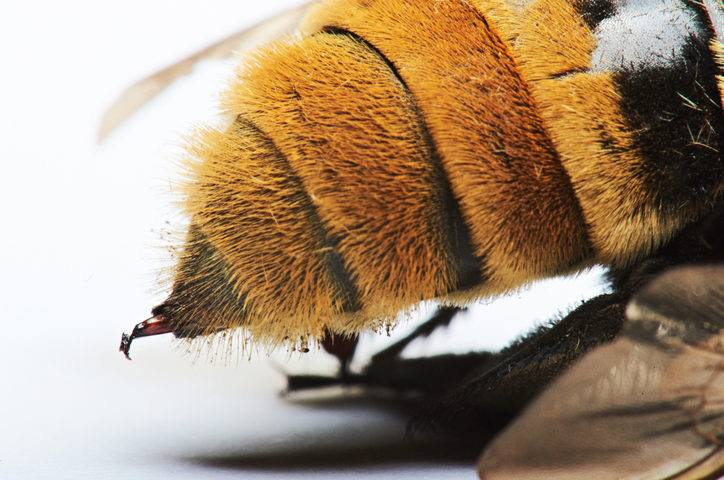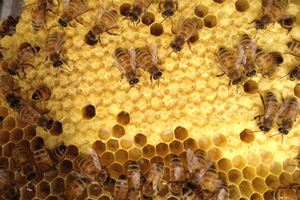- All-In-One Beekeeping for the Bees
- +1-608-728-8233
- info@beepods.com
Protective Gear-All You Need To Know

Macro of bumblebee sting
If you are a beekeeper or planning to become one, you will definitely be stung at one point. Now, this is not to scare you away from beekeeping if you are planning on starting but it is something to be aware of so you can properly prepare. Obviously, nobody enjoys being stung but if you have the proper equipment and take the safety precautions as you learn the ropes then you will be better equipped to beekeep in the future.
There are a variety of safety precautions you can take when beekeeping like not eating bananas before inspecting your hive, traveling with essential oils in case you get stung and many others but we are only telling you about clothing today. Specifically, full suits, jacket veils, observation veils and nitrile gloves. These clothes are the most common safety equipment that you will be introduced to when beekeeping.
When learning about the different options, keep in mind that it comes down to the beekeeper’s decision on what safety equipment they want to use. It is all a personal preference, we’re going to share some pros and cons of common protective clothing so you can make the decision that is best for you.
Full Suits

The full suit is probably the most common protective equipment for new beekeepers. New beekeepers may be afraid of being stung because they have never been stung before. Without being stung, a person may not know if they are allergic to bees or not so it is great for newcomers to wear full suits. These suits have low ventilation. They cover you head-to-toe, so they can get very hot in the summer – if you get warm easily or perspire a lot, you might want to keep that in mind!
There have been times that beekeepers who choose to wear full suits get too comfortable. They get the mindset that they are invincible from bee stings which can lead to carelessness with their bees. If this starts to happen, we highly recommend taking a step back to reassess why you got into beekeeping and possibly consider different proactive gear so that you are always careful and cautious around your bees.
With all that being said, the full body suit does offer some great benefits like full body protection but keep in mind the low ventilation and the low comfort rate of these suits. If this does not seem like it’s for you, maybe the jacket veil would be better.
Jacket Veil
Another great option for beginners right here. The jacket veil is free flowing compared to the full suits. This jacket allows for much more freedom, movement, and ventilation. There is a built in elastic waistline in these jacket veils that helps prevent bees from getting up and inside of the jacket. Do keep in mind that these jacket veils do not offer protective covering from your legs or feet but with proper pants, you should find yourself adequately protected. With your legs free, you should be able to touch your toes and bend down with comfort which may not be as easy if you have the full suit.

All Beepods systems come with a jacket veil. You can purchase additional jacket veils here, along with other protective gear and beekeeping equipment. Our jacket veil is probably the most com
Observation Veils and Gloves
If you are a more experienced beekeeper or a real go-getter who is not afraid of being stung then observation veils are for you. These veils allow for the most freedom and movement because you only get coverage on your head, face, and neck. Your veil may be hooded or have a hat and veil that is attached by a zipper but you must ensure that your veil is attached properly or else bees have the ability to slip into the veil and sting you – OUCH!
Wearing gloves is a different story. We highly recommend wearing gloves regardless of the other protective equipment you choose. At Beepods, we prefer to use thin, nitrile gloves because of the dexterity they allow while still covering your bare hands. The texture of the gloves also disguise your skin so bees are less likely to sting your hands.
If you want more protection than the nitrile gloves, there is the option to wear leather gloves. These are thicker and you will lose dexterity when wearing them just like if you were to wear a full suit but they do offer more protection if that is what you are looking for.
There are a variety of protective beekeeping equipment and suits that you can use to protect yourself from bees. The Beepods website has some great information about the different types of gear available so go check them out if you’re considering getting into beekeeping or just want more information on what will work best for your needs. Happy beekeeping and make sure to keep your bees and yourself safe.



